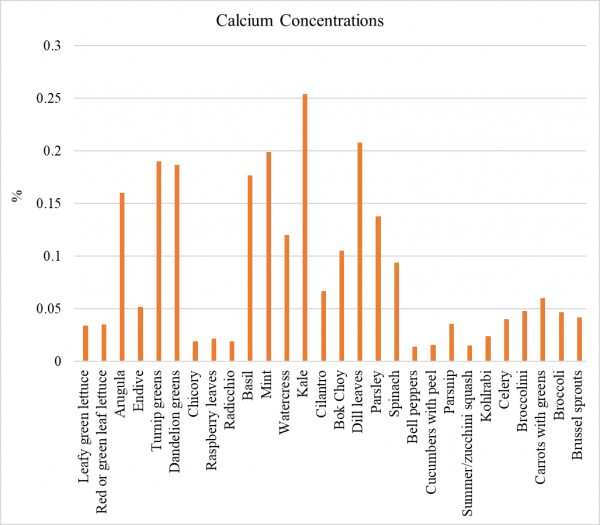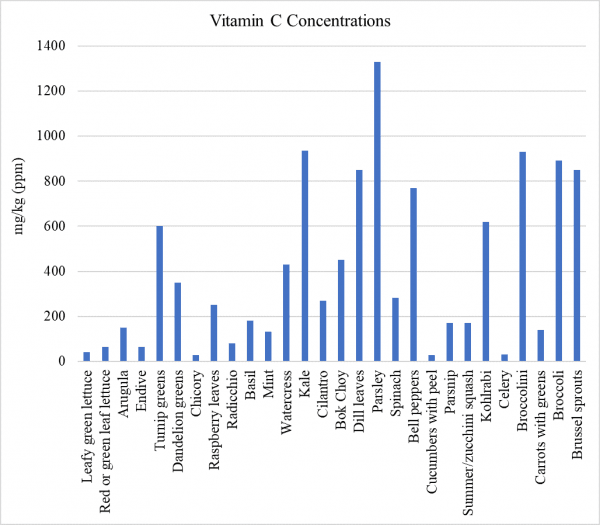Author: Dr. Cayla Iske, PhD
Greens and veggies in your guinea pig’s diet are a great source of key micronutrients (vitamins and minerals) as well as a great way to provide dietary variety. A majority (~70%) of a guinea pig’s diet should consist of high-quality grass hay, alongside uniform food (20%) and veggies and greens (8%). As a simple way to remember, guinea pigs should get about ½ cup of greens per 1 pound of body weight daily. For example, if your pig weighs 2 pounds, they should get around 1 cup of fresh greens each day.
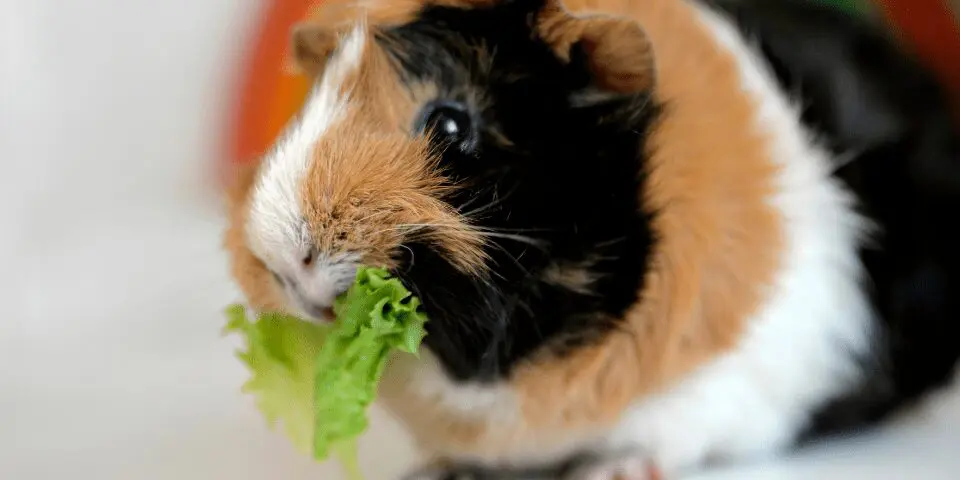
What Are Some Good Greens And Veggies For My Guinea Pig?
A majority of the vegetables you offer your guinea pig should be in the form of leafy greens. These greens are going to be packed with essential micronutrients and antioxidants with very low amounts of starches and sugars. Root vegetables can also be offered to your animal, but limit these to no more than 10-15% of their daily veggies. So, our 2-pound piggie could get about 2 tablespoons of root veggies in addition to their greens (to total 1 cup). It is important that you gradually introduce your guinea pig to new veggies to avoid overwhelming their digestive tract and upsetting their gut. While there are many veggies specifically recommended for guinea pigs, a quick transition to even the most appropriate food can cause some upset in an animal not used to consuming it.
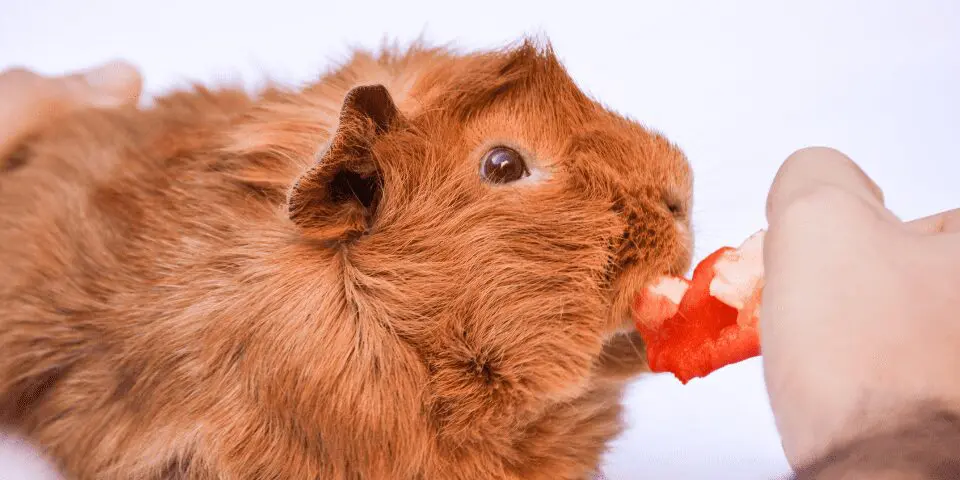
List Of Appropriate Greens And Vegetables For Guinea Pigs
There are many resources available to research the specific benefits of certain veggies, but here we will list some piggie-approved options.
| Leafy Greens: 85-90% of offering | Vegetables: 10-15% of offering |
| Leafy green lettuce (Romaine, butterhead, Bibb) | Bell peppers (any color, seeds removed) |
| Red or green leaf lettuce | Cucumber with leaves |
| Arugula | Parsnip |
| Endive | Summer/zucchini squash |
| Turnip greens | Kohlrabi |
| Dandelion greens | Celery—may want to remove veins or cut into small chunks |
| Chicory | Broccolini |
| Raspberry leaves | Carrots with leaves/greens in tact |
| Radicchio | Broccoli (leaves and stems) |
| Basil (any variety) | Brussel sprouts |
| Mint (any variety) | Cabbage (any type) |
| Watercress | |
| Kale (all types) | |
| Cilantro | |
| Bok Choy | |
| Dill leaves | |
| Parsley | |
| Spinach |
Overall, these veggies are excellent sources of vitamin K, vitamin C, vitamin A, B vitamins, soluble fiber, potassium, magnesium, and trace minerals such as iron, manganese, copper, and zinc. The truly unique contribution of these veggies are the phytonutrients or antioxidants. These phytonutrients are only found in plants and, while not essential for life, do wonders for keeping your pet happy and healthy. Phytonutrients can be vitamins, such as vitamin C, or other compounds such as carotenoids, polyphenols, and flavonoids. Phytonutrients can be powerful antioxidants with anti-inflammatory benefits and can aid in everything from boosting the immune system to maintaining heart health.
Consider The Individual Health Factors Of Your Guinea Pig Before Offering New Greens Or Veggies
While the veggies listed above are generally great options for your little one, it is important to tailor your pet’s diet to their individual needs. For example, dill, parsley, spinach, beetroot, are all high in calcium or oxalic acid, so if your guinea has a history of bladder stones, these options should be spread out and offered infrequently, or avoided altogether. If offered in large quantities, broccoli, brussels sprouts, and cabbage may cause some gastrointestinal discomfort (gas, bloating), so we suggest offering these veggies in moderation. Options such as carrots and parsnips, while delicious, are very calorically dense and contain more sugar/carbohydrates than other veggies, so it is best to provide these options sparingly, or only as a treat. In order to offer the best rotation for your fur baby, its always recommended to consult with your veterinarian.
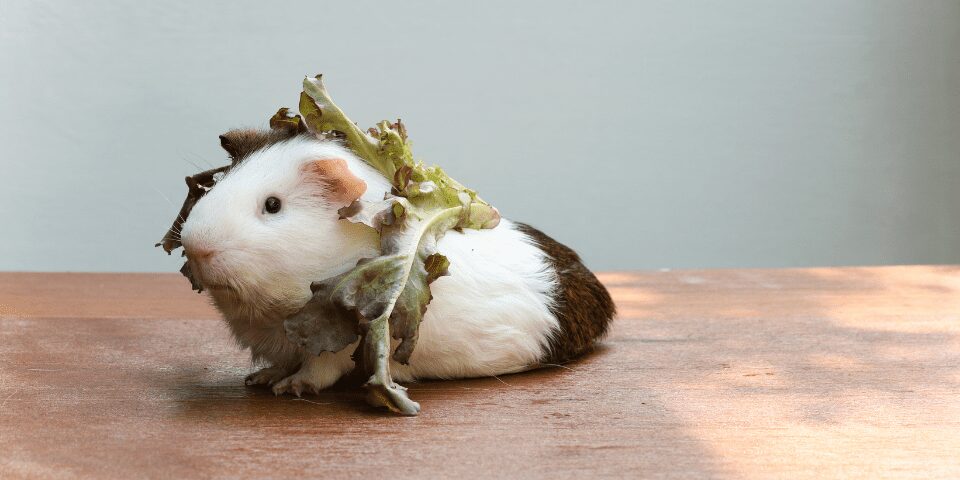
Variety is the spice of life, so rotating your piggy’s veggie smorgasbord is a great way to add variety and enrichment to the daily diet. Just as we recommend offering a variety of hays, offering 3 to 5 different types of veggies daily can keep them interested in their diet. While many veggies may have similar nutritional compositions, there can be a great deal of variety in their aroma, taste, and textures so don’t be afraid to explore and find what your pet likes best!
As a quick and easy reference, we have put together the following charts to compare calcium and vitamin C concentrations in our recommended veggies to control or monitor intake of these nutrients (source: USDA Food Composition Database).
